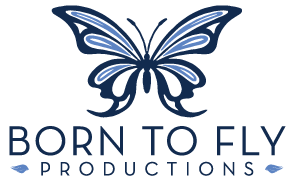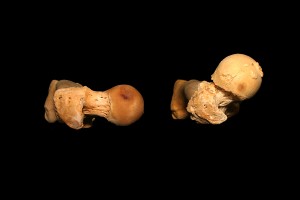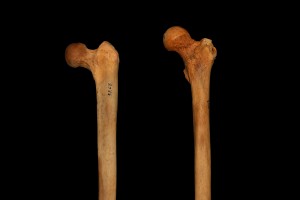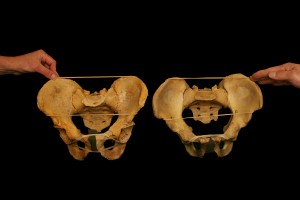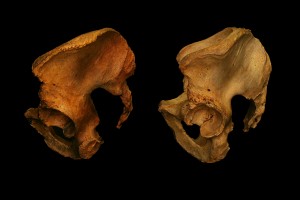Have you ever heard one of your students say they don’t feel a stretch at all, but just that things feel stuck. One person recently put it this way, “When I’m in a seated straddle I can not forward fold over the center at all, there is no pain or stretch, when someone puts pressure on me I begin to feel something but it is very faint.” Our bodies are not all created equal and this article is going to highlight where some of those differences come from – particularly in the hip joint.
When someone can’t do the splits, we want to jump to the classic conclusion that they must be tight and inflexible, but that’s just simple not true. It may be true, but we can also be misled by anatomical variations of the hip joint.
In the pictures above, do you notice the differences at the top of the femur? The ball on the end of this femur goes inside the socket of the hip joint. These two people are not going to squat the same, nor obtain the same flexibility level in their splits safely. One of these people will be able to perform a wide straddle with no issues. The other will experience pain and feel much comfortable in a narrow stance.
Above are two pelvic girdles. The person on the right might run into a block when trying to perform a forward fold in pike position. Below is a side view looking at the hip socket. One is pointing straight out and the other is pointing down and towards the front. Again, this lends itself to people having different positions where they are immediately comfortable and other areas where their bodies are sending them messages that say “Don’t go in that direction!”
Of course it would be great if every student could get perfect 180 degree splits in every direction, but if we honor the way our bodies are made, this simple isn’t anatomically possible for everyone to do safely. In the end, our goal should be to get to know our bodies better and to use our strengths, improve our weakness, and work safely to find the edge of our individual abilities and potential. Very few people are at the edge of their limits, so its important to keep working and not make excuses, but it also important to recognize anatomical limits that may exist! Most importantly, the race to flexibility is against yourself – never against the next person. Don’t compare your range of flexibility to anyone else’s. Embrace who you are and how God made you – bone structure and all.
Photos used with permission from Paul Grilley.
www.paulgrilley.com
